#evchargingstation
Photo

Fastned Charging Station, Charlton
2 notes
·
View notes
Text

EV Charging Infrastructure
With our esteemed clientele as a testament to our reliability and expertise, we are committed to building a robust EV charging infrastructure step-by-step. Together, let's pave the way for a more connected and eco-friendly world with our comprehensive EV charging solutions.
0 notes
Text
At hoping minds, we're at the forefront of the electric vehicle revolution, dedicated to driving sustainable mobility solutions forward. As a leading provider in the EV industry, we specialize in
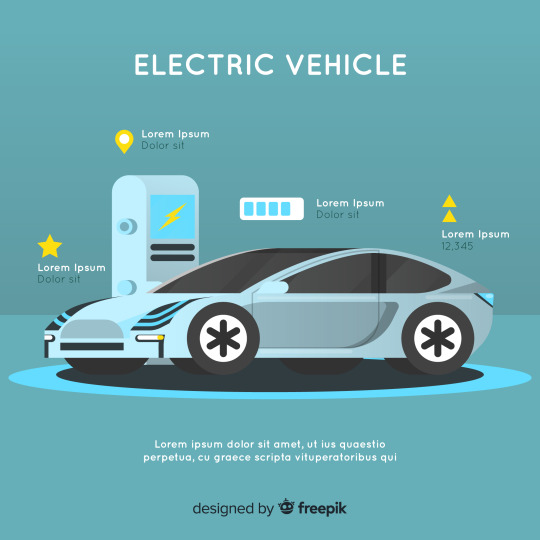
#here are some hashtags incorporating the provided keywords:#ElectricVehicle#ElectricCar#EVChargingStation#ElectricVehicleRange#EVIncentives
1 note
·
View note
Text
Comprehending The Infrastructure Of Electric Vehicles

January 19, 2024
by dorleco
with no comment
Autonomous Vehicle Technology
Edit
Introduction
We have covered the most recent developments in Electric Vehicles technology as well as the infrastructure that will be required to enable EVs to become the norm for personal mobility in the future in this post.
Since their initial introduction, electric cars (EVs) have advanced significantly and are currently enjoying greater popularity than ever. However, some motorists are still apprehensive about giving up their conventional gas-powered internal combustion engine (ICE) cars. While there has been a noticeable performance improvement, long-distance charging capabilities remain a significant worry.
This introduction of EV technology covers the increasing need for a national charging network and the upgrades to the national electricity system required to make EV ownership feasible. Planning and collaboration from all parties, including governmental organizations, utility companies, private charging networks, and customers, will be necessary to ensure a seamless transition from the use of fossil fuels to entirely EVs.
The early days of electric vehicles
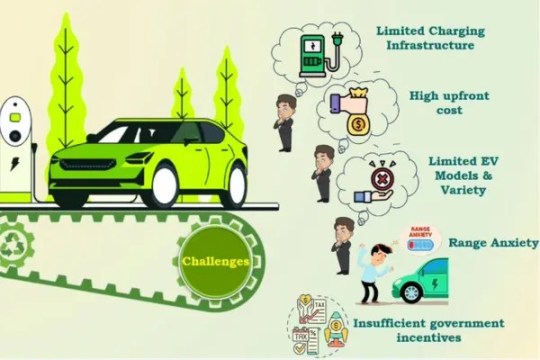
Henry Ford’s mass-produced Model T was the reason behind the decline in interest in electric vehicles. When the Model T was introduced in 1908, gasoline-powered cars were more accessible and reasonably priced. In 1912, an electric roadster sold for almost three times the price of a gasoline car, which cost only $650. By 1935, gasoline-powered automobiles had become more and more popular, and EVs had virtually vanished.
The scarcity of gas has rekindled interest in electric vehicles.
Rising oil costs and gasoline shortages in the late 1960s and early 1970s sparked a rising movement to locate domestic fuel sources and reduce the nation’s reliance on foreign oil. After taking notice, Congress authorized the Energy Department to assist research and development of electric and hybrid vehicles in 1976 by passing the Electric Vehicle Research, Development, and Demonstration Act. Many big and small automakers started looking into alternative fuel vehicle possibilities, such as electric cars, around the same time.
Concern for the environment propelled the development of electric automobiles.
Before new federal and state rules started to change things, interest in electric vehicles had been declining for two decades following the lengthy gas lines of the 1970s. The approval of the 1990 Clean Air Act Amendment and the 1992 Energy Policy Act, plus new transportation emissions restrictions imposed by the California Air Resources Board, helped stimulate a revived interest in electric vehicles in the United States. Manufacturers started converting several of their best-selling car types into electric cars, or EVs as they are now called.
Several people were unconcerned with fuel-efficient cars in the late 1990s due to a flourishing economy, a developing middle class, and low gas prices. The public wasn’t interested in EVs at the time, but engineers and scientists were striving to advance the technology of EVs, particularly batteries, with help from the Energy Department.
Many automakers accelerated their entry into the EV market
The Toyota Prius, which debuted in 1997 in Japan, was the first hybrid electric car ever built in large quantities worldwide. Toyota employed nickel metal hydride batteries, a technology backed by studies conducted by the US Energy Department. Furthermore, something else happened in 2006 that had a role in changing the market for electric cars. A game-changing innovation that helped redefine the EV market was the production of a luxury electric sports car with a range of more than 200 miles on a single charge by a small Silicon Valley business called Tesla Motors.
In late 2010, the Chevy Volt and the Nissan LEAF were both released in the US market. The first plug-in hybrid car to be sold commercially was the Volt, which has a gasoline engine to augment its electric drive when the battery runs out. The LEAF could only be propelled by an electric motor since it was an all-electric car. Other US automakers started producing electric cars during the following few years, but the issue of where to charge them while driving remained.
EV charging stations started to proliferate.
More than 18,000 public, business, and home chargers were installed around the nation in 2009 thanks to funding provided by the Energy Department and the American Recovery and Reinvestment Act, totaling more than $115 million. Today, there are more than 8,000 distinct places with more than 20,000 charging outlets for public electric vehicle chargers thanks to the installation of private companies and automakers’ chargers in strategic US locations.
Infrastructure for EV charging is required nationwide due to rising EV sales.
Given the increasing number of EVs on the road, a national network of charging stations is now essential. Everyone will need to plan and work together, including consumers, government organizations, utility companies, and private charging networks. The problem of the power grid being overloaded cannot be resolved by a varied private network of charging networks on its own. As communities start sharing energy, everyone has to be more conscious of the demand for the power system and make proactive plans.
EVSE (Electric Vehicle Supply Equipment) is the technical term for the equipment used to charge electric cars; it is often referred to as a charging station. An electric safety system for the user and the electrical infrastructure during the charging process is the main purpose of a plug-in vehicle charging station; in particular, it reduces the risk of electric shock and fire.
Networks for charging electric vehicles
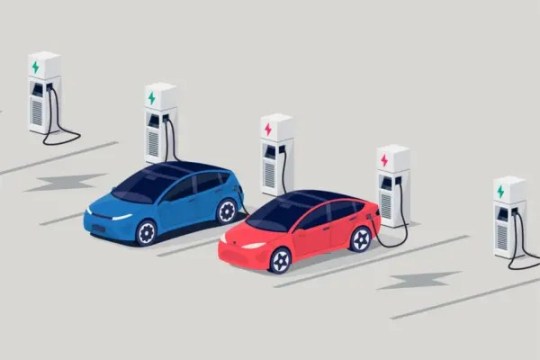
A network of separate infrastructure stations that serve as access points for electric car recharging is known as an electric vehicle charging network. Currently, a large number of federal, state, and local governments, automakers, and suppliers of charging infrastructure are building these networks. State-by-state working agreements between these various institutions will be necessary to aid in the further development of a national infrastructure.
These days, several producers and providers of charging networks offer hardware-agnostic app solutions like Amp Up, EV Connect, and Green Lots, or proprietary solutions like Charge Point. While proprietary vendors prevent consumers from making changes, hardware-agnostic vendors let them swap out their existing charging stations and/or network providers.
Growth of the US electric vehicle charging infrastructure market
In 2020, the US market for electric vehicle charging infrastructure was estimated to be worth USD 2.08 billion. From 2021 to 2028, its compound annual growth rate (CAGR) is predicted to be close to 39%. The market for electric car charging infrastructure is anticipated to see substantial growth over the next ten years due to the growing popularity of electric vehicles and their advantages, which include energy efficiency and cheaper fuel and maintenance costs.
In addition to the annual growth forecast, the $1.85 trillion Build Back Better Act invests $7.5 billion to create a state-wide network of plug-in EV chargers, according to the draft structure. A further $7.5 billion is allocated for buses and ferries with zero or low emissions, to provide thousands of electric school vehicles to school districts all around the nation. The proposal would allocate $65 billion to strengthen the nation’s power grid’s dependability and resilience, which is essential for the smooth transition to electric vehicles (EVs) and guard against the extensive power outages that have been more frequent in recent years.
Expanding the market reach of plug-in electric vehicles, new battery technology is being introduced with support from the Department of Energy Vehicle Technologies Office. The DOE’s research also helped develop the lithium-ion battery technology utilized in the Chevrolet Volt. Lately, the DOE’s research and development expenditures on batteries have contributed to a 50% reduction in the cost of electric vehicle batteries, all the while enhancing the batteries’ power, energy, and lifespan. Since the price of EVs has decreased as a result of all these advancements, people can now afford them.
EVs driving towards the future

President Obama established the EVs Everywhere Grand Challenge in 2012, an Energy Department project that unites the nation’s top scientists, engineers, and companies to get plug-in electric vehicles down to the same price as gas-powered vehicles by 2022.
It remains to be seen what the final result will be for EVs this time around, but it seems certain that most drivers will be using EVs in the future as the infrastructure of charging stations expands and the power grid stabilizes to supply the extra electrical power required.
Components of an EV charging station
An essential component of the technology utilized to construct EV charging stations is the electrical controls used in their production. These could consist of the following:
Overload and short circuit protection is provided by miniature circuit breakers or MCBs.
Residual Current Circuit Breakers offer weather protection against extreme temperatures.
Disconnect switches are necessary when an installation must adhere to current specifications for a disconnecting procedure.
Surge protection devices shield delicate parts from overvoltages and lightning-induced surges.
Contactors, which have a 115A general-purpose current rating, are used to turn on and off the EV’s power.
Energy meters are required if the station is going to be used for commercial charging since the amount of energy used needs to be measured to determine how much consumers should be charged. For this, a digital energy meter with a maximum 80A capacity is utilized.
In charging stations, terminal blocks, wire ducts, and DIN rails would also be utilized to facilitate wiring during assembly.
To power the entire network, a networked charging station would require high-tech devices like controllers and gateways. Additionally, a DC power supply that requires a single or three-phase input voltage would be included.
#ADAS#VCU#Powertrains#EVs#Vehiclecontrolunit#Dorleco#CANcommunication#CAN#ElectricVehicles#EVchargingstation
0 notes
Text
#evcharging#ev#electricvehicle#electricvehicles#evcharger#electriccars#electriccar#evchargingstation#emobility#driveelectric#tesla#gogreen#electricmobility#evchargers#electric#electricvehiclecharging#evs#sustainability#zeroemissions#technology#renewableenergy#goelectric#greenenergy#ecofriendly#chargingstation#evchargingstations#car#environment#zeroemission#teslamodel
0 notes
Text
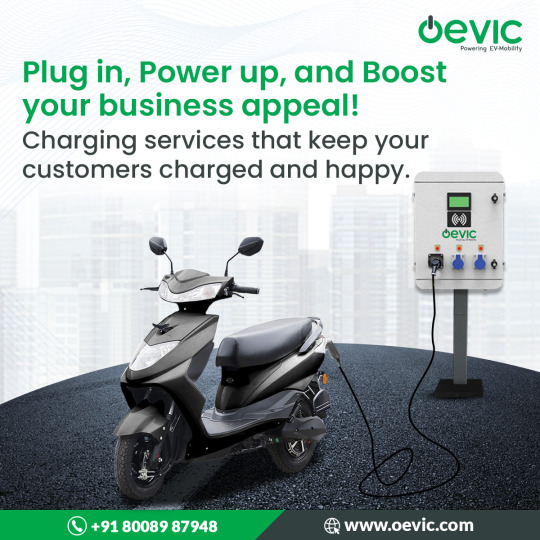
Plug in, Power up, and Boost your business appeal!
Charging services that keep your customers charged and happy.
For EV Charging Solutions Contact Us!
📱+91 8008987948
🌐 oevic.com
0 notes
Text
E-Station | Rugged Monitoring
Rugged Monitoring provides solutions for Electric Vehicle Charging, EV Charging Stations. Power Cable monitoring ensures continuous power supply to the charging station. It includes monitoring Partial Discharge, Temperature, and Periodic Testing Data. Check our website for the latest fiber optic Temperature Monitoring Solutions.
0 notes
Text

Tesla Gen 3 Wall Connector is here!!!
We are pleased to announce that starting today, the Tesla Gen 3 Wall Connector is available for supply & installation from Marky Sparky!
This advanced charging solution offers faster, more efficient charging right at your home, transforming the way you power your Tesla. Featuring a sleek design and smart features, it's tailored to maximize your convenience and charging efficiency. Don't just drive the future, power it with the Gen 3 Wall Connector. Experience the evolution of EV charging today!
Got any inquiries? Send us a message.
Marky Sparky Electrical
Toongabbie 2146, Sydney, NSW, Australia
0432 209 235
https://www.markysparkyelectrical.com.au/
#themarkysparkyteam#Electrician#Sydney#NSW#ElectricalCompany#ElectricalServices#australia#sparky#localelectrician#evchargerinstallation#electricvehicles#evcharging#evchargingstation
0 notes
Text
A Digital Energy Electric Power Equipment Solution Provider

#Wallbox#Chargingpile#RCDEVcharger#RCDEVchargingStation#EVcharger#EVChargingStation#ChargerManufacturer#ACEVcharger#DCEVcharger#ACcharger#DCcharger#EVSE
1 note
·
View note
Link
As an electric vehicle owner, you are confused if you've never used an Electric Vehicle Charging Station. It may damage your electric vehicle charging slot or charging gun. Read here five simple steps to use an electric vehicle charging station shared by an EV charging solutions provider.
0 notes
Photo

Fastned Charging Station, Charlton
2 notes
·
View notes
Text

Switch to Green With Servotech EV Charging Solutions
Make the switch for a greener tomorrow with our EV charging solutions. Our EV chargers offer a seamless transition to eco-friendly transportation, empowering you to make a positive impact on the environment with every charge. Switch to green, and let's drive towards a brighter future together.
0 notes
Text
Perkuat Sinergi, PLN Pasang 4 Unit EV Charging Station di Polda Bali
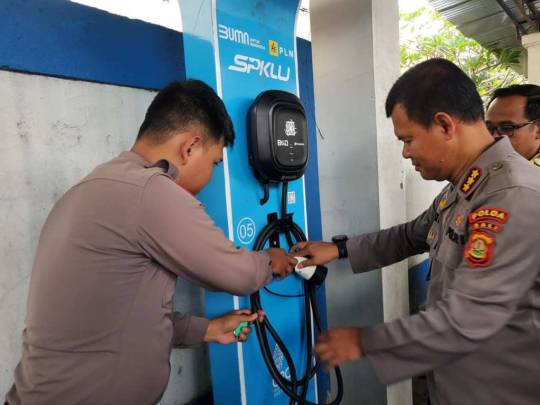
BALIPORTALNEWS.COM, DENPASAR - PT PLN (Persero) bekerja sama dengan Kepolisian Daerah Bali (Polda Bali) memasang 4 unit stasiun pengisian kendaraan listrik atau Electric Vehicle Charger Station (EV Charger Station).
Pemasangan EV Charger Station di Polda Bali ini, menjadi salah satu langkah PLN untuk mendukung upaya percepatan transisi penggunaan kendaraan berbahan bakar fosil menjadi kendaraan listrik.
General Manager PT PLN (Persero) Unit Induk Distribusi Bali mengatakan bahwa PLN telah memasang EV Charging Station berkapasitas 7,2 kilo watt (kW) yang menjadi bentuk komitmen PLN dalam melayani pelanggan yang membutuhkan layanan charging station.
“Ini juga menjadi bentuk sinergisitas antara PLN dan Polda Bali dalam membangun ekosistem EV Charging Station,” jelasnya.
Udayana menambahkan, PLN Bali sampai saat ini telah memasang Stasiun Kendaraan Listrik Umum (SPKLU) sebanyak 32 unit tersebar di seluruh Bali.
“Mulai dari Gilimanuk, tepatnya di Anjungan Betutu Gilimanuk, kemudian tersebar di sisi selatan, Karangasem, Buleleng, Bedugul yang terdiri dari fast charging sebanyak 22 unit dan ultra fast charging sebanyak 10 unit,” terang
Di samping itu home charging juga sudah terpasang di beberapa pelanggan yang telah memiliki kendaraan listrik.
Ia berharap upaya yang telah dilakukan PLN dengan bersinergi dengan pelanggan dapat mendukung upaya Pemda Bali dalam membangun ekosistem kendaraan listrik.
Kabid Humas Polda Bali, Kombes Pol Satake Bayu menjelaskan Kepolisian Daerah Bali mendukung upaya percepatan transisi penggunaan kendaraan berbahan bakar fosil menjadi kendaraan listrik.
“Upaya Polda Bali sendiri dimulai dengan menghadirkan sejumlah mobil yang difungsikan sebagai kendaraan operasional,” ucapnya.
Demi mempermudah pengisian kendaraan listrik ini, maka Polda Bali melalui Korlantas bersinergi dan bekerja sama dengan PLN untuk memasang infrastruktur pendukung.
“Pemasangan ini terhitung membutuhkan waktu sebulan ya, sehingga kami mengapresiasi respon cepat dan kerja sama yang baik dari PLN,” tambahnya.
Selain itu, ia juga berharap melalui sinergi antara PLN dan Polda Bali ini dapat semakin meyakinkan dan mendorong masyarakat untuk beralih menggunakan kendaraan listrik.(bpn)
Read the full article
0 notes
Text
CAN Bus Vs RS 485
January 18, 2024
by dorleco
with no comment
Autonomous Vehicle Technology
Edit
INTRODUCTION
Communication protocols are essential for establishing connections between devices and for effective data interchange in industrial and automation applications. The Recommended Standard 485 (RS485) and the Controller Area Network (CAN) are two of the most widely used protocols in this industry. With the help of the straightforward chart below, you can rapidly learn how CAN Bus VS RS 485 vary from one another.
We will examine the distinctions between these two techniques as well as their benefits and drawbacks in this post.
What CAN Protocol be?
Robert Bosch GmbH created the CAN protocol for use in automotive applications in the 1980s. It has since gained widespread acceptance in other industries as well. Since CAN is a bus-based protocol, a single communication line can be used to facilitate communication between numerous devices. High dependability, fault tolerance, and real-time communication capabilities are well-known attributes of CAN.

Benefits of the CAN bus:
Fast Speed and Bandwidth: The CAN bus is perfect for real-time communication between several devices since it can transfer data at a fast rate of up to 1 Mbps.
Multiple devices can send and receive data on the same communication line thanks to CAN bus support for multi-master/multi-slave communication, which facilitates effective communication between devices.
Fault Tolerance: The high fault tolerance of the CAN bus is a result of its error detection and correction capabilities, which provide dependable data transfer even in noisy surroundings.
Robustness: The CAN bus can function in temperatures between -40°C and +85°C because it is made for severe settings.
Scalability: The CAN bus is flexible and adaptive to changing requirements since it can be readily scaled up or down based on the size and complexity of the system.
Constraints on the CAN bus:
Greater Cost and Complexity: Because of its advanced features and higher data rate than other communication protocols, CAN bus implementation is more costly and difficult than other protocols.
Restricted Range: The 500-meter maximum range of the CAN bus may limit its applicability in scenarios where devices are dispersed widely.
Limited Power Delivery: Devices must have their power source because the CAN bus does not deliver electricity to linked devices.
CAN bus applications be included?
Automotive: The CAN bus is frequently utilized for diagnostics, engine control, and vehicle communication in automotive applications.
Aircraft: In aircraft applications, the Control and Navigation (CAN) bus facilitates communication between avionics systems, including control, guidance, and navigation systems.
Industrial Automation: Sensors, actuators, and controllers communicate with one another via the CAN bus in industrial automation and control systems.
Medical Devices: To communicate amongst devices like ventilators, infusion pumps, and patient monitoring, the CAN bus is utilized in medical devices.
Railway Systems: Signalling, traction, and braking systems are just a few of the control systems that railway systems employ CAN buses to communicate with one another.
FeatureCAN BusRS485Communication MethodBus-BasedPoint-to-PointSpeed and BandwidthHigh Speed (up to 1Mbps)Lower Speed (up to 10Mbps)Distance and TopologyShorter Distance (up to 40m) and Star or Daisy Chain TopologyLonger Distance (up to 1200m) and Daisy Chain TopologyFault Tolerance and ReliabilityHigh Fault Tolerance and ReliabilityModerate Fault Tolerance and ReliabilityCost and ComplexityHigher Cost and ComplexityLower Cost and SimplerApplicationsDistributed Control Systems, Automotive, AerospaceIndustrial Automation and Control Systems
Explain the RS485 Protocol.
Two devices can connect across a great distance using the point-to-point RS485 protocol. Sensors, actuators, controllers, and other devices are connected via RS485 in industrial automation and control systems. RS485 is noted for its ruggedness, long-distance communication capabilities, and noise immunity.
Due to the differential signal used by the RS485 protocol, the communication line is made up of two wires with opposing voltages. As a result, RS485 can function across extended distances of up to 1200 meters. RS485 also employs a master-slave communication paradigm, where one device acts as the master and initiates communication with one or more slave devices.

Benefits of RS485:
Long-Distance Communication: RS485 is perfect for industrial and automation applications where devices may be dispersed over a wide region because it can carry data over long distances of up to 1200 meters.
Multi-Point Communication: The RS485 protocol facilitates multi-point communication, enabling numerous devices to share a communication connection and facilitating effective device-to-device communication.
Noise Immunity: Noise immunity is the ability of RS485 to transmit data reliably over noisy settings by utilizing differential signaling, which lessens the effect of noise and interference on the communication line.
Minimal Cost: The straightforward cabling and inexpensive component cost of RS485 make it an affordable option for automation and industrial applications.
Simple to implement: RS485 is a common option for basic industrial and automation applications since it is simple to implement and doesn’t require complicated hardware or software.
Restrictions on RS485:
Reduced Data Rate: When compared to other communication protocols, RS485 has a lower data rate, which makes it less suitable for applications requiring high-speed data transfer.
Restricted Bandwidth: The quantity of data that may be sent over the communication line may be limited due to RS485’s limited bandwidth.
Half-Duplex Communication: Only half-duplex communication is supported by RS485 devices, which implies that data cannot be sent and received simultaneously, possibly slowing down the connection.
Limited Power Delivery: Since RS485 cannot deliver power to linked devices, each device needs to have its power source.
The uses of RS485:
Industrial Automation: RS485 is frequently utilized in control systems and industrial automation, allowing sensors, actuators, and controllers to be connected.
Building Automation: Lighting, HVAC systems, and other building operations can be controlled by RS485 systems.
Security Systems: Access control systems, security cameras, and other security-related equipment can be connected via RS485 in security systems.
Transportation: RS485 is used to manage and monitor equipment including ticket machines, information displays, and passenger information systems in transportation systems like trains, subways, and airports.
Energy Management: To monitor and regulate the amount of energy consumed in factories, buildings, and other facilities, RS485 can be included in energy management systems.
A comparison of CAN Bus VS RS 485
The communication method, speed and bandwidth, topology and distance, fault tolerance and dependability, cost and complexity, and applications are where CAN Bus VS RS 485 diverge most.
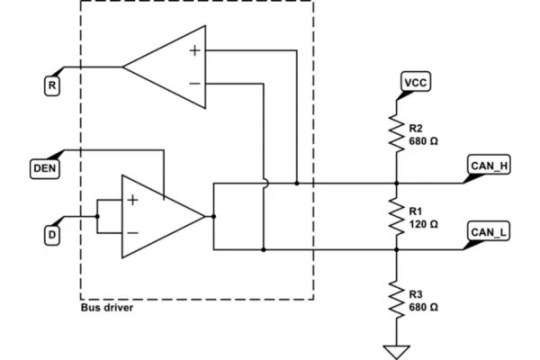
Physical Layer: The data that is carried over a CAN bus is represented by the voltage difference between two wires, which is a differential signal. In contrast, RS485 employs a balanced signal in which the information is sent as a voltage differential between two wires.
Maximum Cable Length: The maximum cable length supported by the CAN bus is 500 meters, however, the maximum cable length supported by RS485 is 1200 meters.
Data Transfer Rate: While RS485 allows up to 10 Mbps, CAN bus offers a greater 1 Mbps data transfer rate.
Network Topology: The bus topology used by the CAN bus connects several nodes to a single bus. Both bus and star topologies—in which several nodes are connected in a star configuration or a daisy chain—can be used with RS485 technology.
Error Handling: The CAN bus is more dependable than RS485 because it incorporates built-in error detection and correction techniques. Although error detection and correction are not built into RS485 itself, they can be accomplished with the use of extra hardware or software.
Cost: Because CAN bus requires specific hardware and software to deploy, it is typically more expensive than RS485 in general.
Conclusion:
In conclusion, each protocol has benefits and drawbacks, and the decision you make over which to use will rely on the particular needs of your application. CAN bus can be a preferable option if you require a real-time, high-speed communication protocol for an automotive or robotics application. RS485 can be a preferable option if you require a strong and dependable protocol for building automation or industrial automation. When choosing the best communication protocol for their application, engineers can make well-informed choices if they are aware of the distinctions between these two protocols.
0 notes
Photo

Before export we need to test seriously EV Charger we promise the quality perfect ,we help you find the best #evcharging solution for your business, look no further than our expert team , who offer top ev Charger service! #evcharging #evindustry #evcharger #зарядныестанцииастана #carcharger #energycompany #factory #electricvehicles #electricvehiclecharging #dccharger #fastcharging #evchargingstation #fyp #fypage https://www.instagram.com/p/Cpy2ch1KDXT/?igshid=NGJjMDIxMWI=
#evcharging#evindustry#evcharger#зарядныестанцииастана#carcharger#energycompany#factory#electricvehicles#electricvehiclecharging#dccharger#fastcharging#evchargingstation#fyp#fypage
0 notes
Text
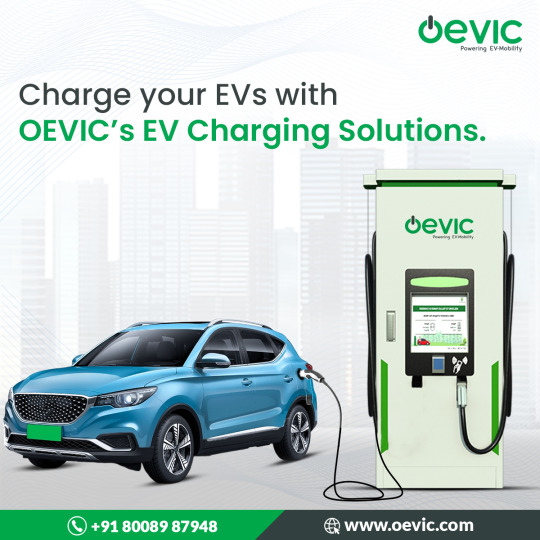
Charging up the future, one electron at a time! ⚡
Explore OEVIC's cutting-edge EV Charging Solutions for a greener tomorrow. 🌱🚗
For EV Charging Solutions Contact Us!
📱+91 8008987948
🌐 oevic.com
0 notes